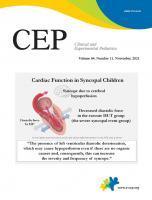Infantile hemangiomas (IHs) are the most common benign tumors of infancy. IHs have a distinct natural history involving early proliferative, quiescent plateau, and involution phases. Eighty percent of all IHs peak in size by 3 months’ patient age, followed by spontaneous regression [1]. Their clinical course during any phase, particularly the proliferative phase, can cause significant morbidity and mortality.
IHs are usually diagnosed clinically. Biopsy and pathological diagnosis are required only when the IH lesion must be differentiated from borderline or malignant vascular tumors. Imaging studies and other investigations are required in special situations (Table 1).
Table 1.
Imaging studies and other investigations in patients with infantile hemangioma
Most cutaneous IHs are uncomplicated; however, approximately 10%–15% require treatment [2]. Indications for treatment include life-threatening nature (causing heart failure or respiratory distress), risk of functional impairment such as visual obstruction or feeding difficulties, ulceration, and severe anatomic distortion, especially on the face [3]. A patient with IH who is at risk of complications should be referred to a multidisciplinary team for evaluation, specific diagnostic measures (e.g., magnetic resonance imaging, screening for hypothyroidism, or coagulation abnormalities), and specific treatment.
The most common treatment modality during the proliferative phase is medical, which aims to minimize or prevent the development of morbidity. Effective medical treatment during proliferation can minimize or prevent the future need for surgical debulking and recontouring. IHs manifesting as obstructions or ulcerations require immediate therapy.
Propranolol can be the first-line treatment. Hemangiol®, a liquid formulation of propranolol, was approved by the U.S. Food and Drug Administration for the treatment of IHs in 2014 [4]. The efficacy of propranolol was first discovered when two infants with large IHs showed signs of cardiac failure [5]. Propranolol was initiated for their cardiac indications, but the IHs regressed rapidly. A randomized controlled trial of propranolol demonstrated its efficacy at discoloring and reducing tumor volume without causing significant adverse events (AEs) [6]. Guidelines on the initiation and management of infants taking propranolol have been established [7]. The goal dose is usually 2–3 mg/kg/day in divided doses. Although the IH shrinks rapidly with oral propranolol, a minimum of 6 months of therapy is recommended. Recurrence after the discontinuation of propranolol occurs in 10%–15% of cases [8]. IHs with structural anomalies, including PHACE syndrome (posterior fossa malformations, hemangioma, arterial anomalies, cardiac anomalies, and eye anomalies) are not contraindicated for propranolol treatment, but extreme caution is needed. Topical timolol has gained popularity as a low-risk alternative for treating smaller superficial IHs. For patients with contraindications to propranolol, such as bronchial asthma, atrioventricular block II–III, proneness to hypoglycemia, hypersensitivity to propranolol, pheochromocytoma, and corticosteroids, should be considered. A recent randomized clinical trial directly comparing corticosteroids to propranolol demonstrated similar efficacy with comparable AEs, although the corticosteroid group had more severe AEs [9]. Surgery is rarely indicated during the proliferative phase except for diagnostic confirmation or in cases of rapidly proliferating IHs causing arterial bleeding.
After incomplete regression, excessive fibrofatty tissue and scars can raise cosmetic concerns. There are limited indications for medical therapy to treat IHs beyond the proliferative phase. Laser therapy may be indicated to correct persistent coarse telangiectasia after IH involution. In cases of contour deformities, the only treatment option is surgical debulking and recontouring of the affected areas.
The treatment of IHs incorporates a wide range of modalities. It is imperative to understand the different growth phases of IHs and the morbidities that can occur at each phase. The early detection of at-risk IHs is a major point requiring increased awareness by pediatricians, general practitioners, and health specialists to identify potentially problematic IHs within the first 2–3 weeks of life so that they can be treated during the early stage of proliferation.





 PDF Links
PDF Links PubReader
PubReader ePub Link
ePub Link PubMed
PubMed Download Citation
Download Citation


